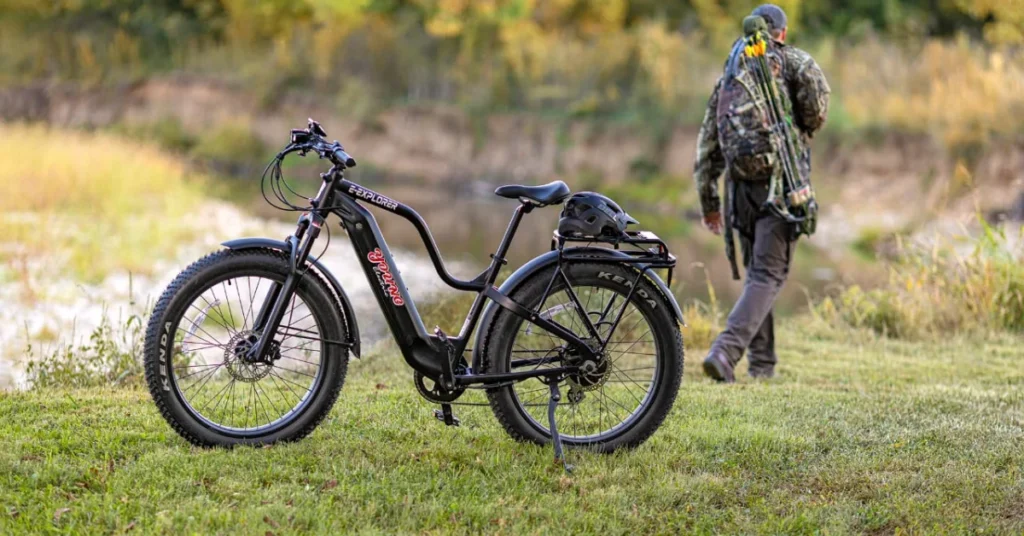Introduction
In recent years, step-through ebikes have become a popular choice for urban commuters and casual riders alike. Their easy-to-mount design, combined with electric assistance, makes them a convenient and comfortable option for daily transportation. However, as with any vehicle, step-through ebikes are subject to various regulations that riders need to be aware of. This article explores the important regulations that govern step-through ebikes, ensuring you stay compliant while enjoying your ride.
What are Step-Through Ebikes?
Step-through ebikes are electric bikes that feature a low or absent top tube, making it easier to step on and off. These bikes are designed for comfort and accessibility, especially for people who may find traditional bikes difficult to mount due to physical constraints or clothing. With the added benefit of an electric motor, step-through ebikes offer an eco-friendly and efficient alternative to cars for commuting and short-distance travel.
Understanding Step-Through Ebikes Regulations
Legal Classification of Step-Through Ebikes
Step-through ebikes, like other electric bikes, are classified based on their power and speed. Most regions have specific laws that define the classification of ebikes to ensure safety on the roads. These classifications often depend on the bike’s motor power, top speed, and whether the rider is required to pedal or not.
In many areas, step-through ebikes fall under the same regulations as regular electric bikes. However, certain distinctions, such as weight and power, can impact whether your bike qualifies as a long range ebike or needs to be registered as a motor vehicle. For example, in the U.S., an ebike with a motor not exceeding 750 watts (1 horsepower) and a top speed of 20 mph is typically classified as a Class 1 ebike, which has its own set of regulations.
Age Restrictions and Licensing Requirements
In some jurisdictions, the use of step-through ebikes is restricted to riders of a certain age. For example, riders must be at least 16 years old to operate an ebike with a motor above a certain wattage. In many regions, riders of class 1 and 2 ebikes do not require a special license or registration, but it is essential to verify local laws to avoid legal issues.
Helmet Laws for Step-Through Ebikes
While step-through ebikes are a convenient and low-impact mode of transportation, safety is still a priority. In some regions, the law requires all riders of electric bikes, including those on step-through models, to wear a helmet. These helmet laws are more stringent for higher-powered ebikes, particularly for riders under a certain age. It is crucial to check your local area’s regulations to ensure compliance.
Speed and Power Limitations
One of the most significant regulations for step-through ebikes relates to their motor power and speed capabilities. In many areas, step-through ebikes are limited to a specific motor wattage, usually not exceeding 750 watts (1 horsepower). Additionally, the motor assistance should cut off once the bike reaches a certain speed, typically around 20 mph in the U.S.
Riders who want to exceed these limits may need to follow additional rules, such as registering the bike as a motorcycle or obtaining a special license. Always check local speed and power regulations to avoid fines or penalties.
Local Road and Trail Access Regulations
Step-through ebikes are often allowed on public roads and bike lanes, but this depends on local regulations. In some cities, step-through ebikes are permitted to ride in bike lanes, while in others, they may be restricted to certain roads or trails. Some parks and nature reserves have specific rules regarding the use of electric bikes, including step-through models, to ensure that they do not disrupt wildlife or other park users.
Safety Standards for Step-Through Ebikes
Braking Systems and Light Requirements
The safety of step-through ebikes is paramount, and regulations often specify that these bikes must be equipped with certain safety features. For instance, many areas require ebikes to have functional brakes, including front and rear lights for visibility. Additionally, step-through ebikes may be required to have reflectors or reflectors built into the tires, especially if they are used at night or in low-visibility conditions.
Battery Safety Regulations
As with any electric vehicle, the battery is a critical component of the step-through ebike. Battery safety regulations may govern the type of battery used, its wattage, and how it should be maintained or disposed of. Many countries have specific rules for lithium-ion batteries to prevent overheating, fires, or environmental damage. Riders should ensure that their ebike’s battery complies with safety standards and is used according to manufacturer guidelines.
Tips for Staying Compliant with Step-Through Ebikes Regulations
Familiarize Yourself with Local Laws
Since step-through ebikes are subject to different regulations depending on where you live, it is essential to familiarize yourself with local laws. Check local government websites or consult local bike shops to ensure that you meet all the necessary requirements for operating your step-through ebike.
Stay Within Legal Limits
To avoid potential fines, make sure your step-through ebike’s motor and speed meet the legal requirements for your area. If you plan to modify your ebike, check with local authorities to determine if your modifications will affect its legal status.
Wear Proper Safety Gear
While helmets may not be required in all areas, wearing safety gear is always a smart choice. A well-fitted helmet, gloves, and appropriate clothing can help protect you in the event of an accident.
Be Aware of Where You Can Ride
Ensure that you only ride your step-through ebike on roads, bike lanes, or trails where it is allowed. Avoid restricted areas, and follow all traffic laws to ensure your safety and the safety of others.
Conclusion
Step-through ebikes are an excellent option for people looking for an easy-to-use and eco-friendly mode of transportation. However, it is important to stay informed about the regulations that govern their use. By understanding the laws surrounding step-through ebike, including classification, speed limits, and safety requirements, you can ensure a safe and legal riding experience. Always stay informed, follow local regulations, and ride responsibly to make the most of your step-through ebike.
Image Title: Step-Through Ebike Regulations Overview
Image Alt Text: Understanding step-through ebike regulations and safety requirements
Image Description: A step-through ebike with a clear view of the electric motor and safety features, highlighting key regulatory aspects like speed limits and battery safety.







